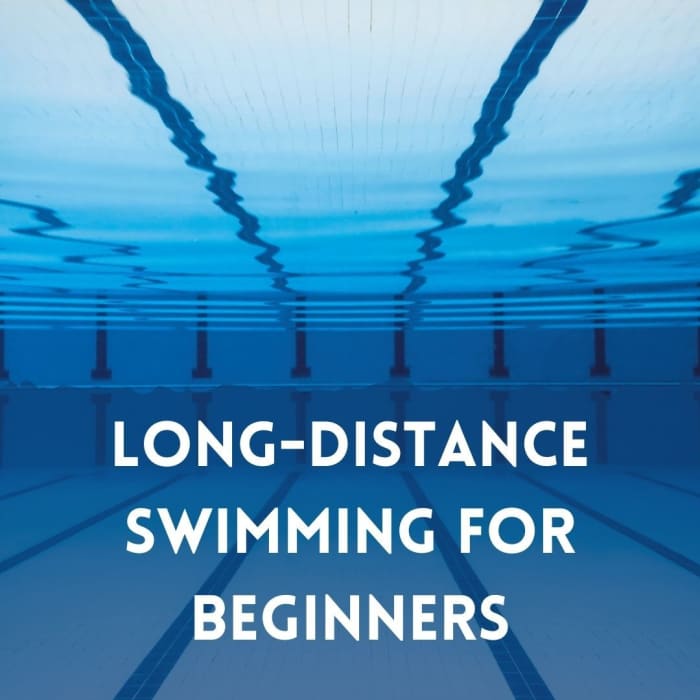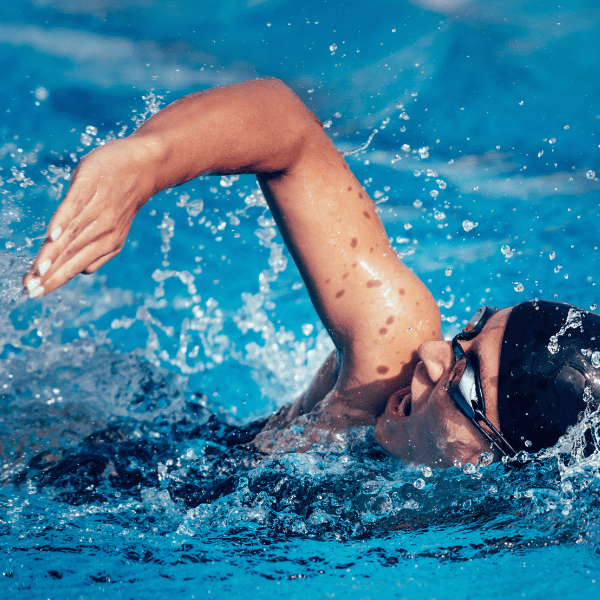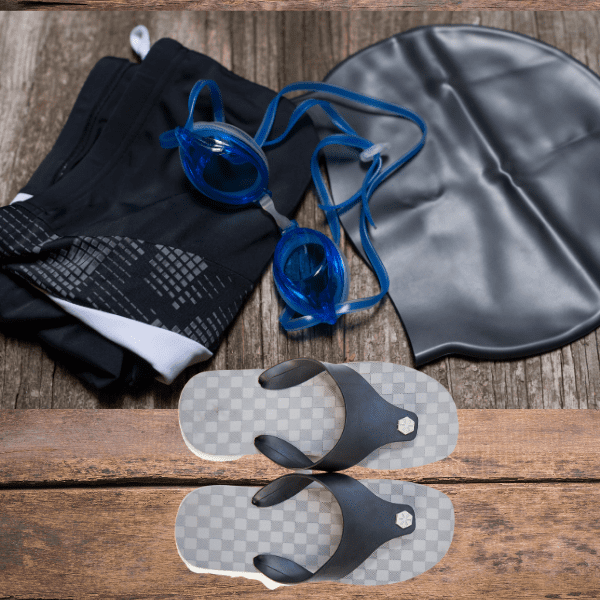
Long-distance swimming—tips and tricks to go from zero to 5k in a short amount of time
Canva.com
Tips for Those Interested in Swimming Long Distance
Swimming is a challenge for most people. In this article, I will be giving tips on how to begin your journey to meet what seems to be an impossible goal.
I joined a class of 25 three-year-olds to learn the fundamentals of swimming and slowly worked up my stamina and strength, doing lap after lap to achieve my goal of joining a swimathon, which would mean swimming 5k without stopping. With daily practice and goal setting, I was able to hit my goal in seven months.
In this article, I’ll be sharing what I did to overcome the fear and anxiety, how I set goals, and other tips that will help you eventually do the same at your own pace. If I could do it, so can you!
In this article, we will tackle the following:
- Decide to start
- Find a pool/coach
- Determine how much time you will need to reach your goal
- Get proper equipment
- Set goals
- Tips for long-distance swimming
- Big goal: join a swimathon or relay triathlon
- After-swim care

Decide to Start
Don’t let your current abilities and swimming level determine your future success. You need to start somewhere, and deciding to start is the first step. Knowing what lies ahead, like overcoming anxiety, lack of time, body pain, and everything else you can come up with that may hinder you, is just something you need to sort out and deal with. When you do decide to start, you need to follow through. Set a specific start date, and stick to it.
Find a Pool and Coach
Find a clean and conveniently located pool. You need to find out if there are enough lanes; you don’t want to have to fight for a lane with other swimmers. Some pools already have swimming programs or coaches to choose from.
Watch a pool session before booking to see how the coaches are with their students and if their teaching style is something you will be comfortable with. Watch their movements, body language, how they position themselves in the pool, how they interact with the students, and how much they respect their students’ personal bubbles. This is very important.
Once you see how they operate, you can discuss with them a few key points that will determine if you will give this a go:
- Your goals, so the coach can determine which program would be suitable for you
- The coaching style—one-on-one sessions or a group class
- Coaching hours
- Timeline
- What to expect
Determine How Much Time You Will Need to Train
Training time will depend on the program and the recommendation of your coach. I recommend setting aside an hour each day or each time you swim in the beginning. Once you start doing long-distance swims, you need to dedicate at least two to two-and-a-half hours each time for a 5k swim, depending on your built-up stamina and endurance.

Get Proper Equipment
These are the essential equipment you need to get before you start:
- Correct-fitting swimsuit: You need to feel comfortable in the water without worrying about dragging, losing your suit, or certain body parts showing during the swim. Your suit should be snug but not too tight. Once you’re in the water, it will loosen up a bit.
- High-quality goggles: This is important, especially for long-distance swims. Adjusting your goggles would mean stopping in the middle of your swim, which is not only a bummer but also quite annoying. Make sure the goggles have no leaks and the strap fits comfortably around your head. You may have to buy more expensive goggles, but this will be an excellent investment. I recommend these goggles because they’re durable and don’t fog up.
- Swim cap: Get a swim cap that snugly fits your head without giving you a headache.
- Hand paddles, kickboards, pull buoy, and hand gloves: Only get these if the coach tells you to. Their program will determine if these things are essential. Some coaches or pools would already have these on hand for classes to lend to the students. But I recommend you get your own if these things are needed for hygienic reasons.
- Slippers: Always bring your own slippers. You don’t watch to catch any fungal infection.
Set Goals
Setting goals will be the most important thing you need to do so you will have something to shoot for. You will not be expected to learn proper swim form and techniques on your first day and swim 5 kilometers just after a week. That is not realistic. But depending on how often you practice, you will be able to set lap goals.
FYI, a lap in an Olympic-size pool is 50 meters. If the pool you will be swimming in is 25 meters, one lap or one length is equal to going in one direction and going back to where you started. That is one lap. There will be an argument from some about the definition of a lap, but to simplify things, let us peg our pool at 50 meters in length. So in order to complete 5 kilometers, you would need to do 100 laps.
How to Train for Long-Distance Swims
Here are the steps to begin training for long-distance swims. This assumes that you have learned the basics and proper techniques and are comfortable in the front crawl or freestyle, meaning you no longer have trouble with twisting your head or inhaling on both the left and right sides. Your arm position and your kicks are already on point. Now, why is this important? Your comfort level will determine how long you will last in the water. Do not fret; with each pool session, your body will get used to the movements, and eventually, swimming will come a bit more naturally.
- Set a series of short swim distances you need to accomplish. In the beginning, set a goal to swim 25 meters. That is half the length of the pool. Stop, stand, and try to do another 25 meters to reach the other side. Do this for about a week, assuming that you swim four to six times a week.
- Every week, the length you need to swim without stopping should increase. My recommendation is to advance to a full lap in your second week.
- On the third or fourth week, you should have already done two laps back and forth from where you started. This will depend on how strong you feel in the water. Take it slow, but be consistent.
- Increase the number of laps every one or two weeks.
As an example, I will be illustrating the lap goals I had during the entire process from week 1 to month 7. Yours will be different, and that is ok. You can set your goals slowly. This is how I did it.
- 25 meters—week 1
- 1 lap
- 2 laps
- 10 laps
- 26 laps
- 36 laps
- 50 laps—month 5
- 80 laps—month 6
- 100 laps—month 7
As you can see, there was a giant leap during the 50–80-lap goal. By that time (around month 5), I already built up my stamina and endurance and was able to increase my distance quickly. I was already used to swimming, and I had trained and relaxed my mind. I knew what to expect, and I learned how to block out negative thoughts and anxiety because I had already been doing it for a long time.
Tips for Long-Distance Swimming
Long-distance swimming is entirely different from racing. You need to be slow and steady and learn to be mentally adjusted because swimming is such an individualized sport. You have zero interaction with other people, and doing laps in a pool can be monotonous, boring, and very challenging. Here are a few tips you can try to get through it.
- Hydrate before you start your swim.
- Eat a light meal at least an hour before.
- Rehydrate right after.
- Once in the water, make bubbles at least 5 to 10 minutes before you start. This will help your body to relax.
- Get in the zone. Psyche yourself up, give yourself a pep talk and be your own cheerleader.
- Stretch and get comfortable in the water.
- Adjust your gear.
- I suggest not tumbling yet at the end of the lap to change direction. But, this is up to you if you feel comfortable doing it. If you are planning on doing long distances, personally, I would go for tapping the edge of the pool and swimming back. This will prevent you from getting dizzy. Imagine doing 100 tumbles in the pool to reach 5 kilometers.
- You might encounter someone trying to race you. Do not indulge them! Keep to your own pace. They might be faster than you, but you will outlast them, that is for sure!
- There will be yucky days! When this happens, it’s usually your mind telling you that you can’t do it, you need to stop, you’re drowning, tired, and so on. Sing that little voice inside your head to sleep. Singing or simply humming will help. It got me through a lot of yucky days, for sure!
- You can also buy waterproof earbuds from companies like Speedo. You can try this but expect that there will be times it might get dislodged from your ears, and you would need to readjust it; that would mean stopping and standing. Also, there are lap counting watches. I do not personally use these watches. I like being mindful of my counting. Not only does it help occupy my mind, but it also keeps me on track.
- Resting and recuperating are just as crucial as exercising or swimming. Give yourself ample rest days.
Join a Swimathon or a Relay Triathlon
There are several different organizations that have their own races/swimathons. You can find one that fits your needs and goals. You can also eventually join a relay triathlon where you could do the swim leg. Be sure to train in open water before any race because it will be very different swimming in salt water vs. fresh water.
After-Swim Care
Things you can do to help fight the downside of being in the water for a long time:
- Damaged hair: If you are often in the water for an extended period, your hair will certainly dry out. Make sure to condition and treat your hair.
- Dry skin: Apply moisturizer to your skin. Hydrating the skin is essential.
- Dehydration and fatigue: Consume a recovery drink after your swim. This will help you recuperate.
Swimming Is Fitness, But You Won’t Necessarily Lose Weight
Although swimming is a form of exercise, in my opinion, it doesn’t really make you lose a lot of weight. It will tone your stomach a bit, but the overall shape of your body will generally be the same. However, swimming will definitely strengthen your lungs and make you stronger. The best outcome of this challenge is that not only will you have more confidence in the water, but you will also be proud of yourself for accomplishing such a feat!
The Swim Challenge: My Story
I was able to go from not knowing how to swim to eventually swimming a 5k in just seven months. My experience will differ from everyone else’s because the outcome will depend on others’ habits and actions taken to get there.
First off, let me clarify—before starting, I did know how to swim, if you can call floating, wading, and doggie paddling a form of swimming. I was able to get in the water, keep my head afloat, and would eventually be able to go around the pool bobbing around like an apple in a barrel. That was not swimming at all.
The first thing I did was decide to learn how to be technically or scientifically proficient in the water. I knew that I needed to learn how to do the basics, which is to freestyle swim just to go from one end of the pool to the other.
The next step was deciding to join a class. This meant joining a class of 25 three-year-olds. This was not easy. I had to share a coach with other people, and children, for that matter. But, it did not deter me. I was willing to take the humiliation and keep my eyes on the prize.
So, for a week, I woke up early, and got in the pool. But I have to admit—the kids did more styles of swimming than I did. I continuously improved my freestyle for about two weeks. After the initial stage, I moved on to learning other strokes like the butterfly, backstroke, breaststroke, and sidestroke.
We did the usual drills, tumbling in the water, proper breathing, and everything you need to know to get better at swimming. I can tell you that after the third session, I was able to apply the techniques and successfully do my first half lap in the pool.
This was the beginning. After, I slowly worked up my stamina and strength, swimming daily, doing lap after lap, and setting a goal to join a swimathon, which meant swimming 5k without stopping. With daily practice and goal setting, I was able to hit my goal in seven months.
I hope you’ve found this article useful and that it will help you to achieve your personal goals at your own pace.
This content is accurate and true to the best of the author’s knowledge and is not meant to substitute for formal and individualized advice from a qualified professional.
© 2020 Anna Javier
Comments
Helna on September 25, 2020:
Very interesting.


